Withlacoochee River System Update - 3/1/2021
Southwest Florida Water Management District sent this bulletin at 03/01/2021 05:38 PM ESTFebruary Rainfall Boosts Water Levels and River Flows
Rainfall:
- Over the past few months, river flows and water levels have been dropping, which is normal during Florida’s dry season (October to May).
- That trend came to a temporary halt in February.
- Over the past month, our region received 4.3 inches of rainfall, which is higher than the historical average (3.0 inches).
- Higher rainfall in February provided a slight boost to our region’s water resources.
- Over the past 12 months, we’ve received about 49.5 inches of rain, which is 4 inches below average (53.6 inches) for that time.
- Aquifer (groundwater) levels are currently in the 50th percentile, exactly average for March but lower than where they were a year ago (68th percentile).
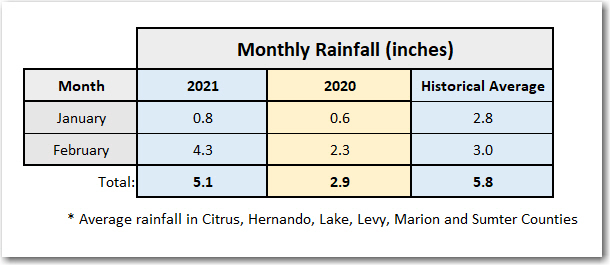
Withlacoochee River (from the Green Swamp downstream past Hwy 200):
- Water levels and flows along the Withlacoochee River rose in February thanks to some much-needed rainfall.
- River levels are currently 2-3 inches higher than they were a month ago.
- River flows increased by an average of 14% over the past month.
- Despite these recent gains, water resource conditions along the Withlacoochee River are expected to continue to naturally decline over the next few months as our dry season continues.
- Currently, river levels and flows remain lower than they were a year ago, as seen in the table below.
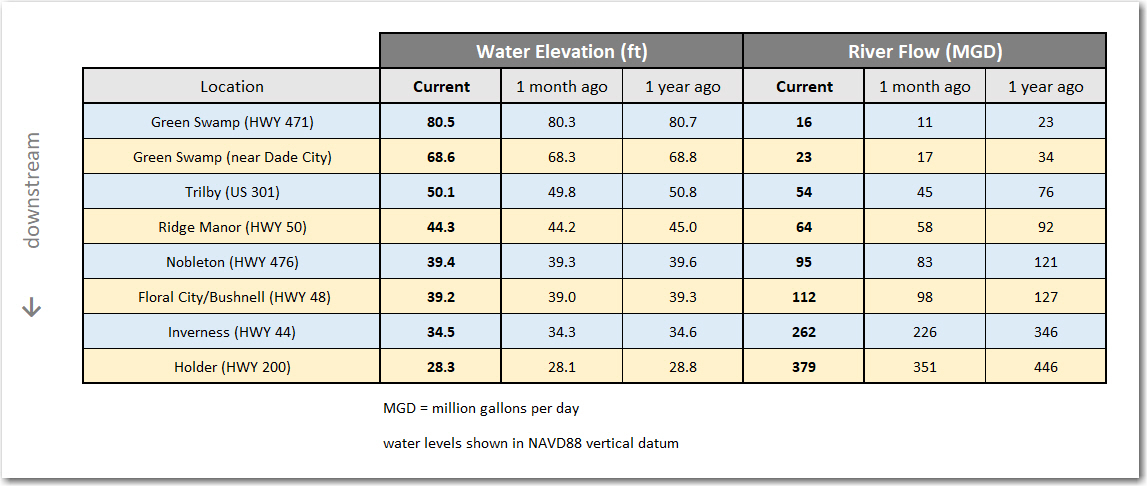
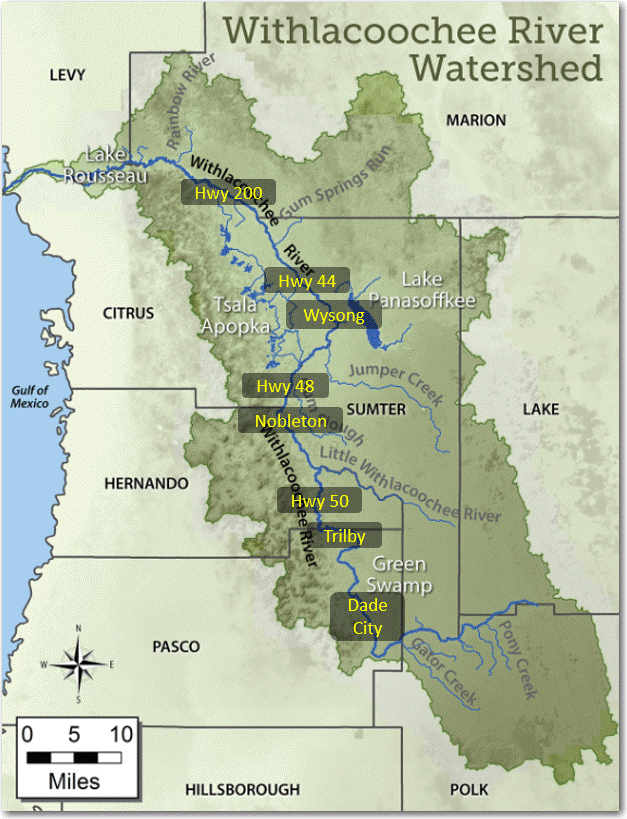
Withlacoochee River at Iron Bridge Recreation Area (State Forest)
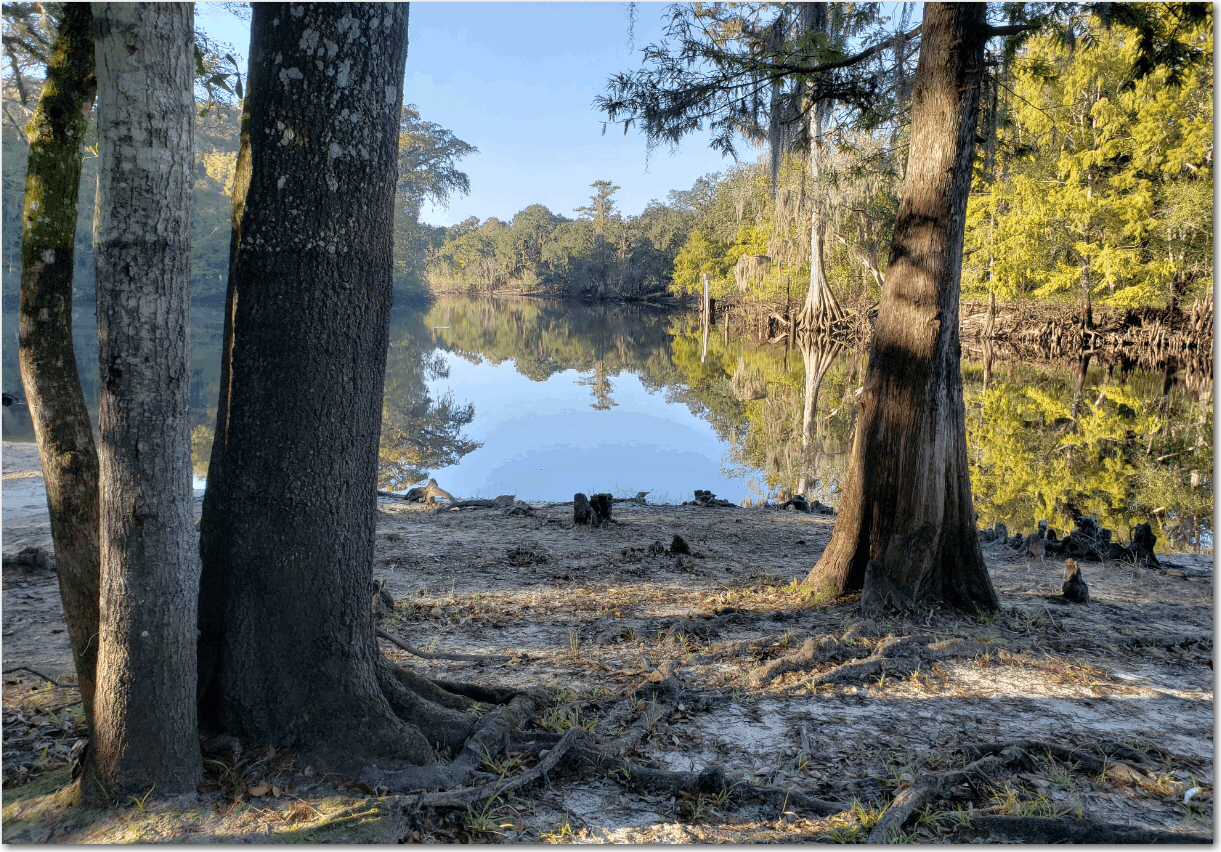
Tsala Apopka Chain of Lakes:
- From November through January, water levels throughout the Tsala Apopka lake chain had fallen 6-8 inches.
- In February, however, there was enough rain to hold lake levels steady.
- As a result, water levels in all three pools of Tsala Apopka are currently about 4 inches higher than they were a year ago.
- The next few months (March to June) are when we typically see sharp declines in water levels due to warmer temperatures and higher evaporation.
- How far the lakes drop this spring will depend on how much rainfall we get in the coming weeks.
- The water control structures (aka “locks”) remain closed, helping to conserve water in Tsala Apopka.
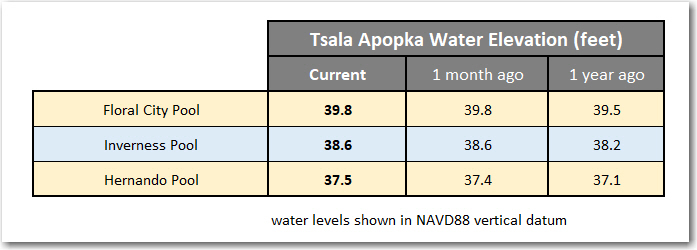
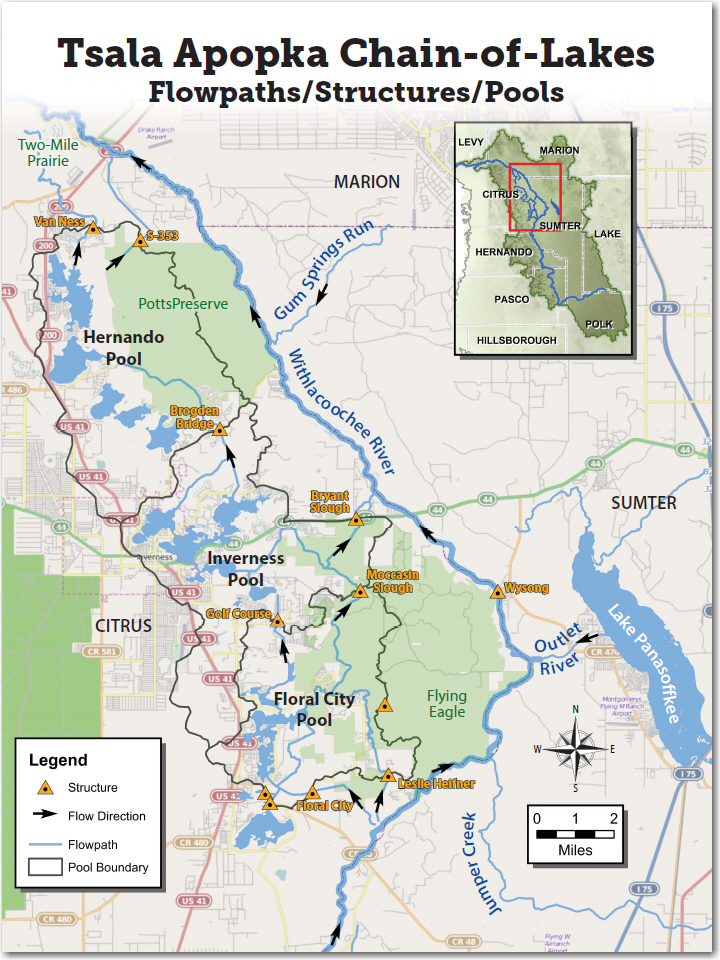
Tussock Lake - Floral City Pool
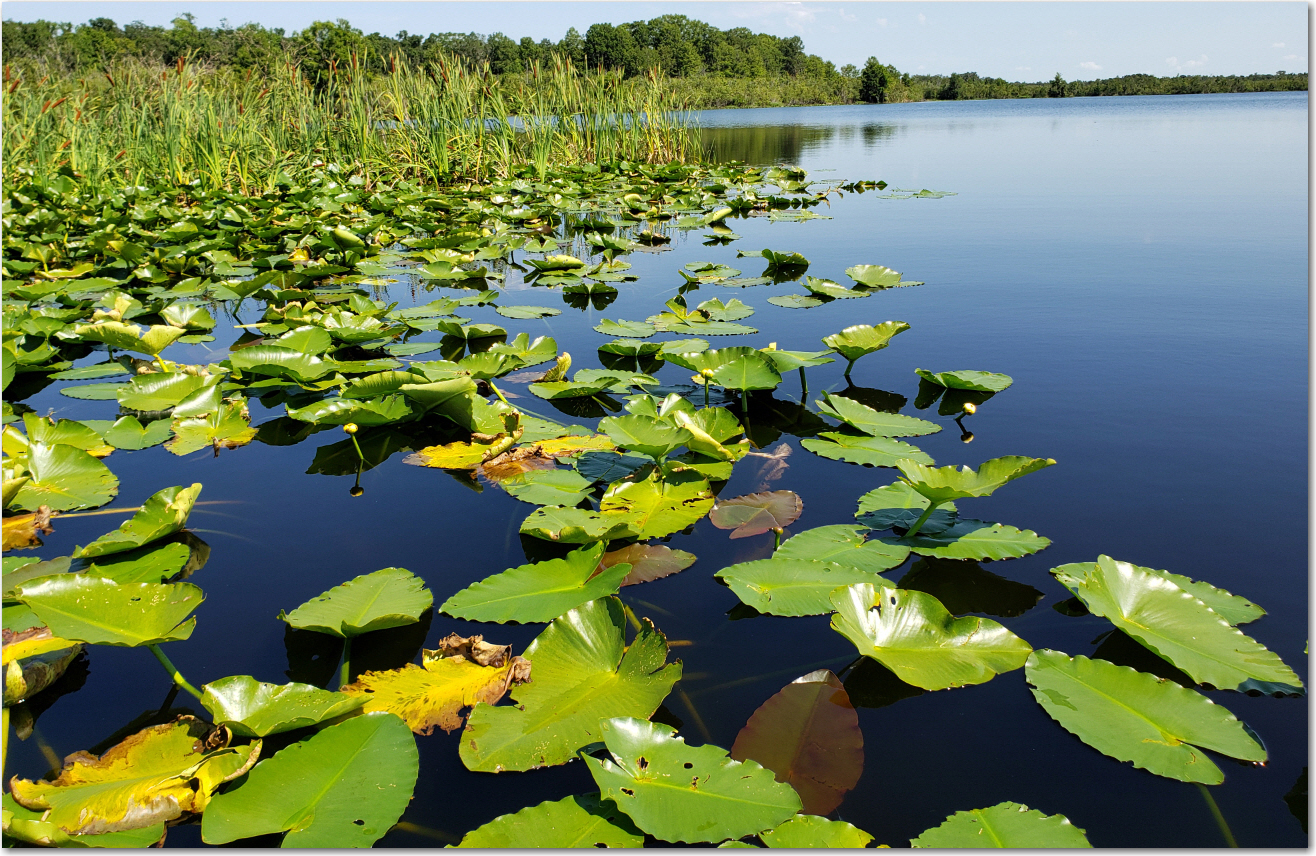
Lake Panasoffkee and Wysong:
- Lake Panasoffkee provides flow to the Withlacoochee River, thanks to a continuous supply of water from the aquifer and adjacent spring-fed creeks.
- Over the past month, water levels in Lake Panasoffkee rose about 3 inches, due to increased rainfall and creek inflows.
- Lake Panasoffkee is currently a few inches lower than it was a year ago.
- Inflows to the lake from Little Jones Creek and Shady Brook increased by 17% in January.
- Outflows from the lake to the Withlacoochee River slightly decreased over this time.
- The main gate of the Wysong structure remains raised, helping to conserve water immediately upstream and in Lake Panasoffkee.
- The boat lock at Wysong is operational again (via self-service).
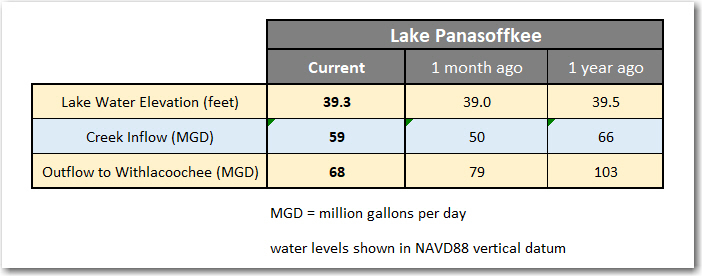
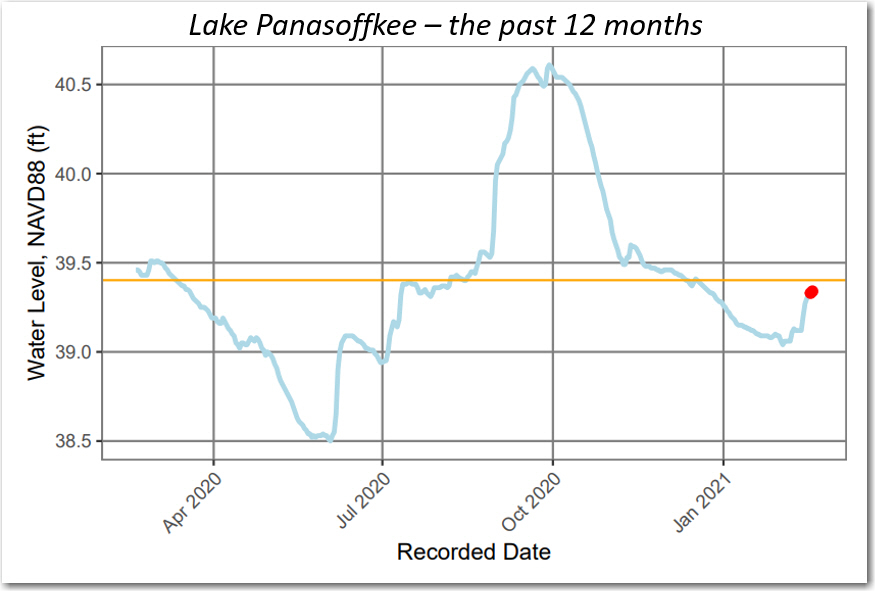
Lake Rousseau and the Lower Withlacoochee River (from Dunnellon to the Gulf of Mexico):
- Lake Rousseau is an in-stream reservoir, created 112 years ago (1909) when the original Inglis Dam was built on the Withlacoochee River.
- Upstream of Lake Rousseau, flow from the Rainbow River combines with flow in the Withlacoochee River near Dunnellon.
- Over the past month, contributing Withlacoochee River flows increased by 8% while Rainbow River flows remained fairly steady.
- Flow in the Rainbow River is about 12% lower than it was a year ago, due to less overall rainfall the past 12 months.
- The Rainbow River is currently providing more flow to Lake Rousseau than the Withlacoochee River is, a common occurrence during the dry season.
- Overall, inflows to Lake Rousseau have increased by about 3% over the past month but are 13% lower than they were a year ago.

- Outflows from Lake Rousseau are controlled by the Inglis Main Dam (to the Barge Canal) and the Inglis Bypass Spillway (to the Lower Withlacoochee River).
- The Inglis Main Dam is only open when flow leaving Lake Rousseau exceeds the capacity of the Inglis Bypass Spillway.
- Currently the Inglis Dam is closed, and all flow is passing from Lake Rousseau to the Lower Withlacoochee River.
- Rainfall in February effectively increased freshwater flow to the Lower Withlacoochee by around 7%.
- Work is set to begin in March to collect better bathymetry (bottom elevations) along the entire Lower Withlacoochee River.
- These new data will help support the ongoing MFL study.
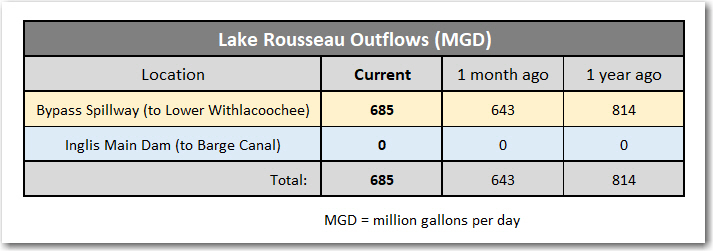
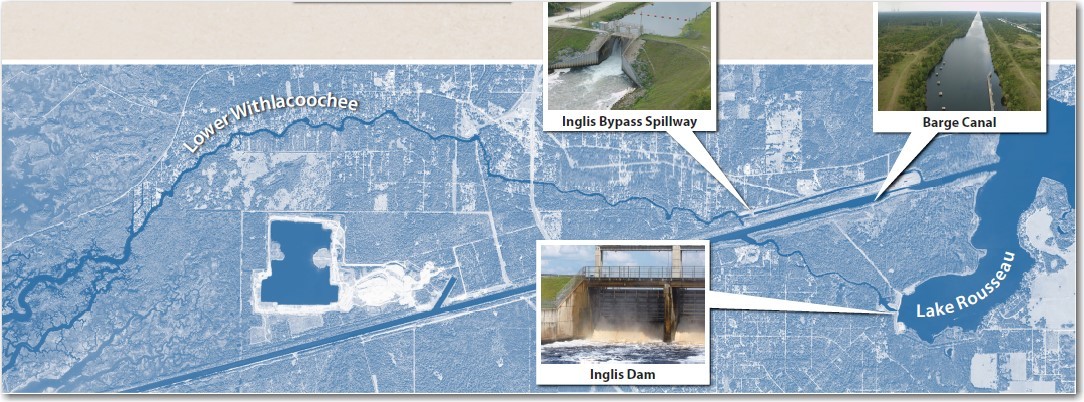
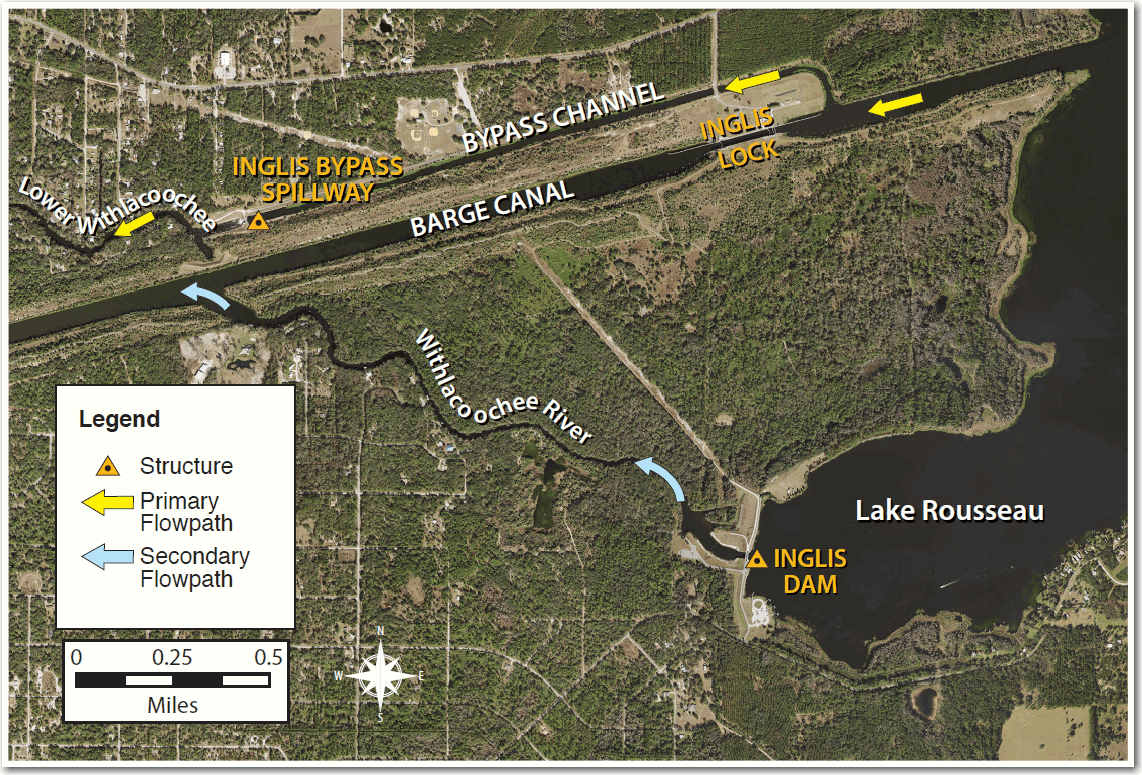
As always, let me know if you have any questions or concerns. Take care and have a great week!
Mark
Mark Fulkerson, Ph.D., P.E.
Chief Professional Engineer
Water Resources Bureau
Southwest Florida Water Management District
(352) 796-7211, ext. 4410
(800) 423-1476 (FL only)
(352) 279-4493 (cell)

